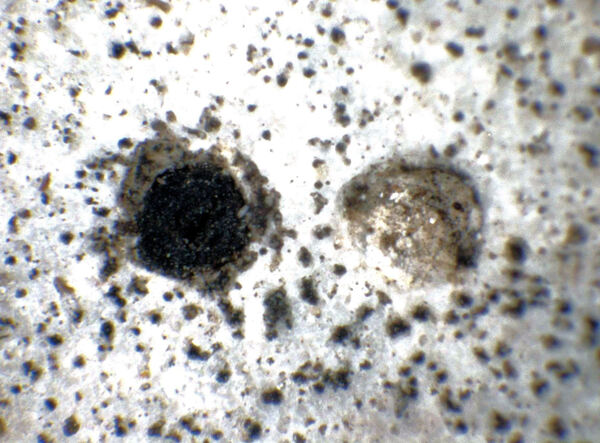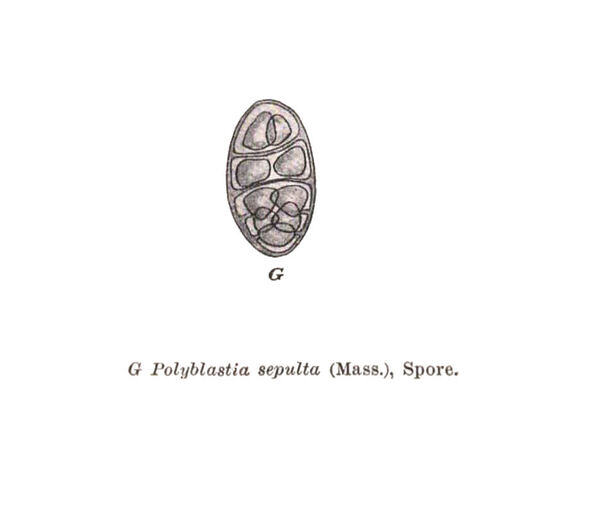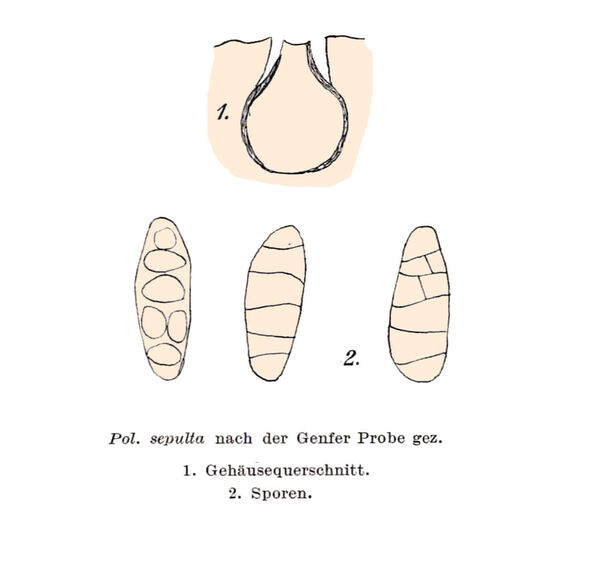Polyblastia sepulta A. Massal.
Lotos, 6: 81, 1856.
Synonyms: Amphoroblastia pertusula (Nyl.) Servít; Amphoroblastia sepulta (A. Massal.) Servít; Polyblastia bavarica (Dalla Torre & Sarnth.) Zschacke; Polyblastia pertusula (Nyl.) Zschacke; Thelidium epipolaeum Arnold non sensu A. Massal.?; Verrucaria sepulta (A. Massal.) Wedd.
Distribution: N - Frl (Tretiach 2004), Ven (Lazzarin 2000b, Nascimbene & Marini 2007, Nascimbene 2008c), TAA (Nascimbene & al. 2007b), VA (Piervittori & Isocrono 1999). C - Marc (Nimis & Tretiach 1999), Umb (Genovesi & Ravera 2001, Ravera & al. 2006), Abr (Nimis & Tretiach 1999, Cucchi & al. 2009, Gheza & al. 2021). S - Camp (Nimis & Tretiach 2004).
Description: Thallus crustose, endosubstratic, continuous, whitish to ochre-brown. Perithecia black, globose, 0.24-0.4 mm across, completely immersed and leaving pits in the rock. Involucrellum absent; exciple thin, dark throughout, globose but prolonged into a sort of beak; hamathecium of periphyses and periphysoids, interascal filaments absent; hymenial gel hemiamyloid, I+ red (I+ blue at very low concentrations of I), K/I+ blue. Asci 8-spored, clavate, K/I–, fissitunicate, the wall thickened above, with an ocular chamber, dehiscent by extrusion of an endotunica to form a delicate rostrum. Ascospores submuriform, with 3-6 transverse septa and 1-2 longitudinal septa, hyaline, ellipsoid, 31-44 x 14-20 μm. Photobiont chlorococcoid. Spot tests: K-, C-, KC-, P-, UV-. Chemistry: without lichen substances.
Note: on hard calciferous rocks in shaded and humid situations, often on pebbles, most frequent in the Alps above treeline. The whole complex - see synonyms - is in need of revision. According to Savić & al. (2008), the species belongs to the Thelidium-clade, not to Polyblastia s.str.
Growth form: Crustose endolithic
Substrata: rocks
Photobiont: green algae other than Trentepohlia
Reproductive strategy: mainly sexual
Poorly known taxon in need of further study
Commonnes-rarity: (info)
Alpine belt: rare
Subalpine belt: rather rare
Oromediterranean belt: absent
Montane belt: very rare
Submediterranean belt: absent
Padanian area: absent
Humid submediterranean belt: absent
Humid mediterranean belt: absent
Dry mediterranean belt: absent
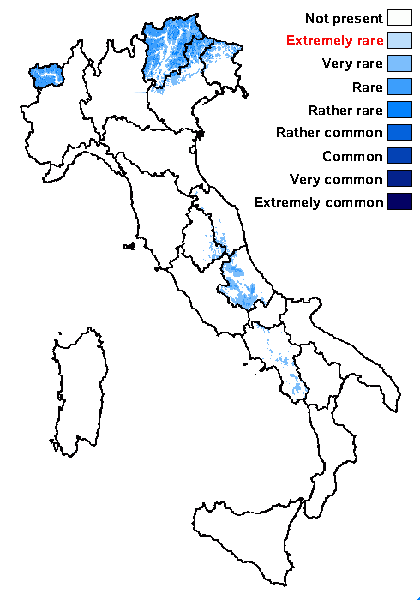
Predictive model
Herbarium samples
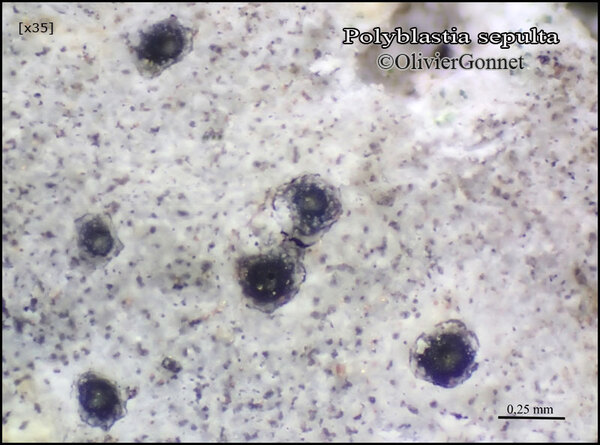
Courtesy Danièle et Olivier Gonnet - Source: https://www.afl-lichenologie.fr/Photos_AFL/Photos_AFL_P/Text_P_4/Polyblastia_sepulta.htm
France, 5/6/2014 - Fleurey-sur-Ouche, alt. 275 m, Côte-d'Or - (21) - sur paroi de calcaire très cohérent (Bathonien), herb. et det. D. et O. Gonnet

Courtesy Danièle et Olivier Gonnet - Source: https://www.afl-lichenologie.fr/Photos_AFL/Photos_AFL_P/Text_P_4/Polyblastia_sepulta.htm
France, 5/6/2014 - Fleurey-sur-Ouche, alt. 275 m, Côte-d'Or - (21) - sur paroi de calcaire très cohérent (Bathonien), herb. et det. D. et O. Gonnet
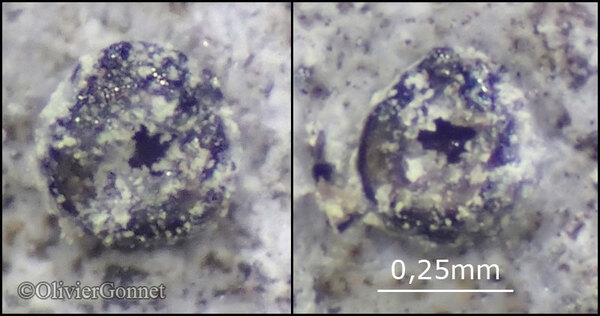
Courtesy Danièle et Olivier Gonnet - Source: https://www.afl-lichenologie.fr/Photos_AFL/Photos_AFL_P/Text_P_4/Polyblastia_sepulta.htm
France, 5/6/2014 - Fleurey-sur-Ouche, alt. 275 m, Côte-d'Or - (21) - sur paroi de calcaire très cohérent (Bathonien), herb. et det. D. et O. Gonnet
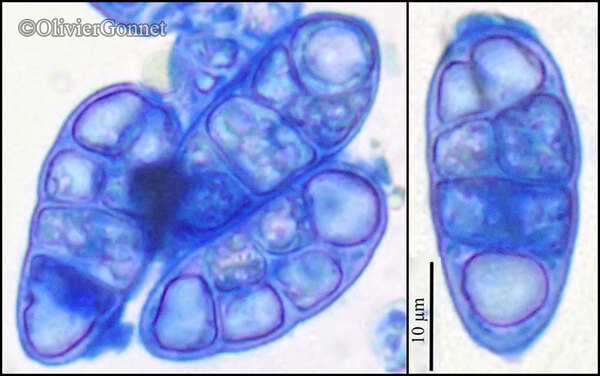
Courtesy Danièle et Olivier Gonnet - Source: https://www.afl-lichenologie.fr/Photos_AFL/Photos_AFL_P/Text_P_4/Polyblastia_sepulta.htm
France, 5/6/2014 - Fleurey-sur-Ouche, alt. 275 m, Côte-d'Or - (21) - sur paroi de calcaire très cohérent (Bathonien), herb. et det. D. et O. Gonnet
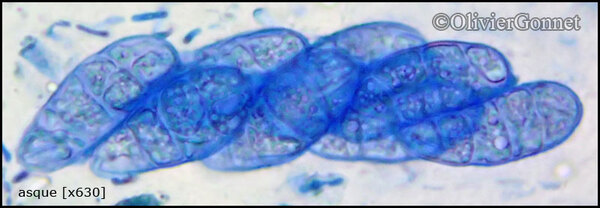
Courtesy Danièle et Olivier Gonnet - Source: https://www.afl-lichenologie.fr/Photos_AFL/Photos_AFL_P/Text_P_4/Polyblastia_sepulta.htm
France, 5/6/2014 - Fleurey-sur-Ouche, alt. 275 m, Côte-d'Or - (21) - sur paroi de calcaire très cohérent (Bathonien), herb. et det. D. et O. Gonnet
Growth form: Crustose endolithic
Substrata: rocks
Photobiont: green algae other than Trentepohlia
Reproductive strategy: mainly sexual
Poorly known taxon in need of further study
Commonnes-rarity: (info)
Alpine belt: rare
Subalpine belt: rather rare
Oromediterranean belt: absent
Montane belt: very rare
Submediterranean belt: absent
Padanian area: absent
Humid submediterranean belt: absent
Humid mediterranean belt: absent
Dry mediterranean belt: absent

Predictive model
| Herbarium samples |

Courtesy Danièle et Olivier Gonnet - Source: https://www.afl-lichenologie.fr/Photos_AFL/Photos_AFL_P/Text_P_4/Polyblastia_sepulta.htm
France, 5/6/2014 - Fleurey-sur-Ouche, alt. 275 m, Côte-d'Or - (21) - sur paroi de calcaire très cohérent (Bathonien), herb. et det. D. et O. Gonnet

Courtesy Danièle et Olivier Gonnet - Source: https://www.afl-lichenologie.fr/Photos_AFL/Photos_AFL_P/Text_P_4/Polyblastia_sepulta.htm
France, 5/6/2014 - Fleurey-sur-Ouche, alt. 275 m, Côte-d'Or - (21) - sur paroi de calcaire très cohérent (Bathonien), herb. et det. D. et O. Gonnet

Courtesy Danièle et Olivier Gonnet - Source: https://www.afl-lichenologie.fr/Photos_AFL/Photos_AFL_P/Text_P_4/Polyblastia_sepulta.htm
France, 5/6/2014 - Fleurey-sur-Ouche, alt. 275 m, Côte-d'Or - (21) - sur paroi de calcaire très cohérent (Bathonien), herb. et det. D. et O. Gonnet

Courtesy Danièle et Olivier Gonnet - Source: https://www.afl-lichenologie.fr/Photos_AFL/Photos_AFL_P/Text_P_4/Polyblastia_sepulta.htm
France, 5/6/2014 - Fleurey-sur-Ouche, alt. 275 m, Côte-d'Or - (21) - sur paroi de calcaire très cohérent (Bathonien), herb. et det. D. et O. Gonnet

 Index Fungorum
Index Fungorum
 GBIF
GBIF
